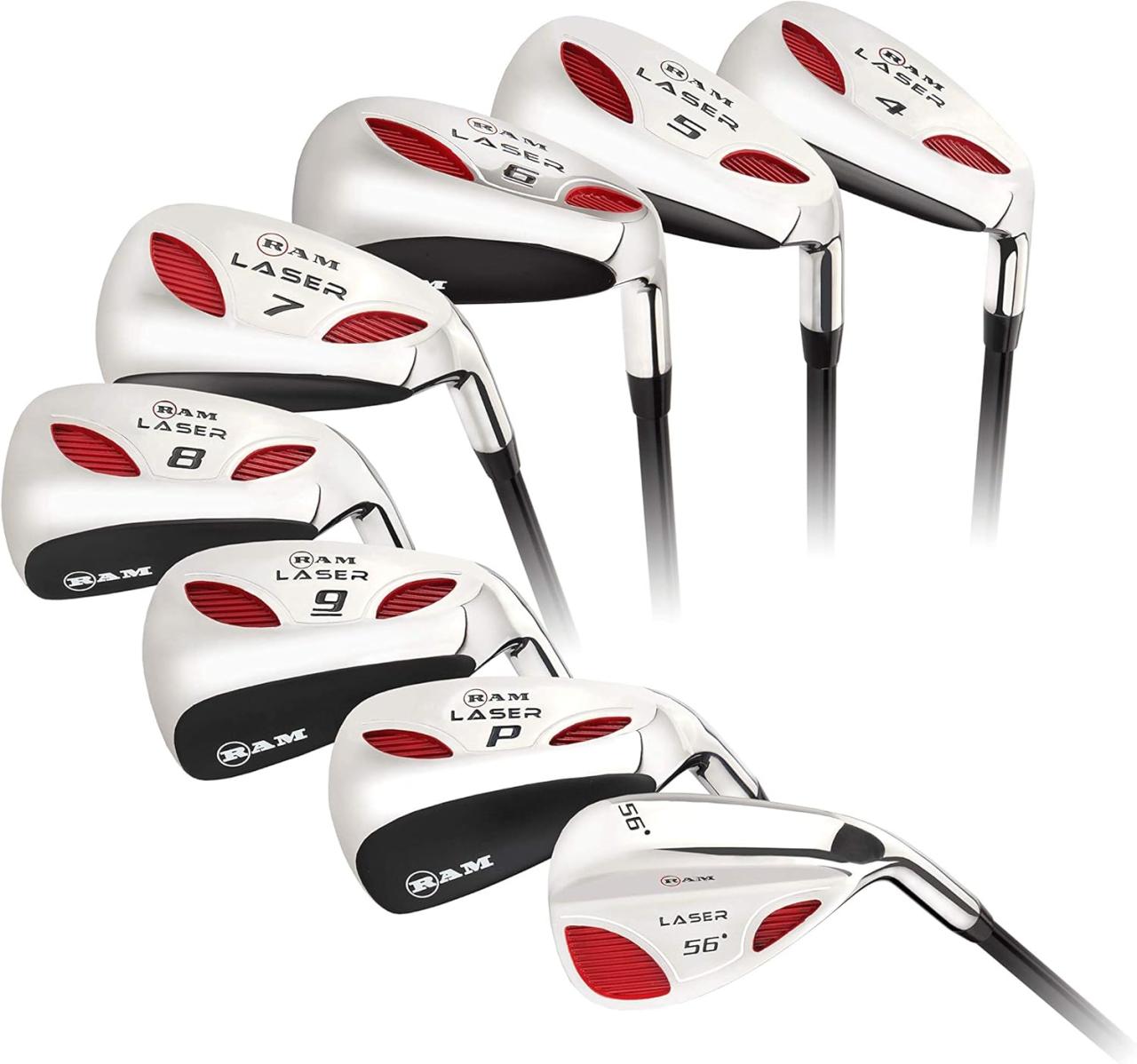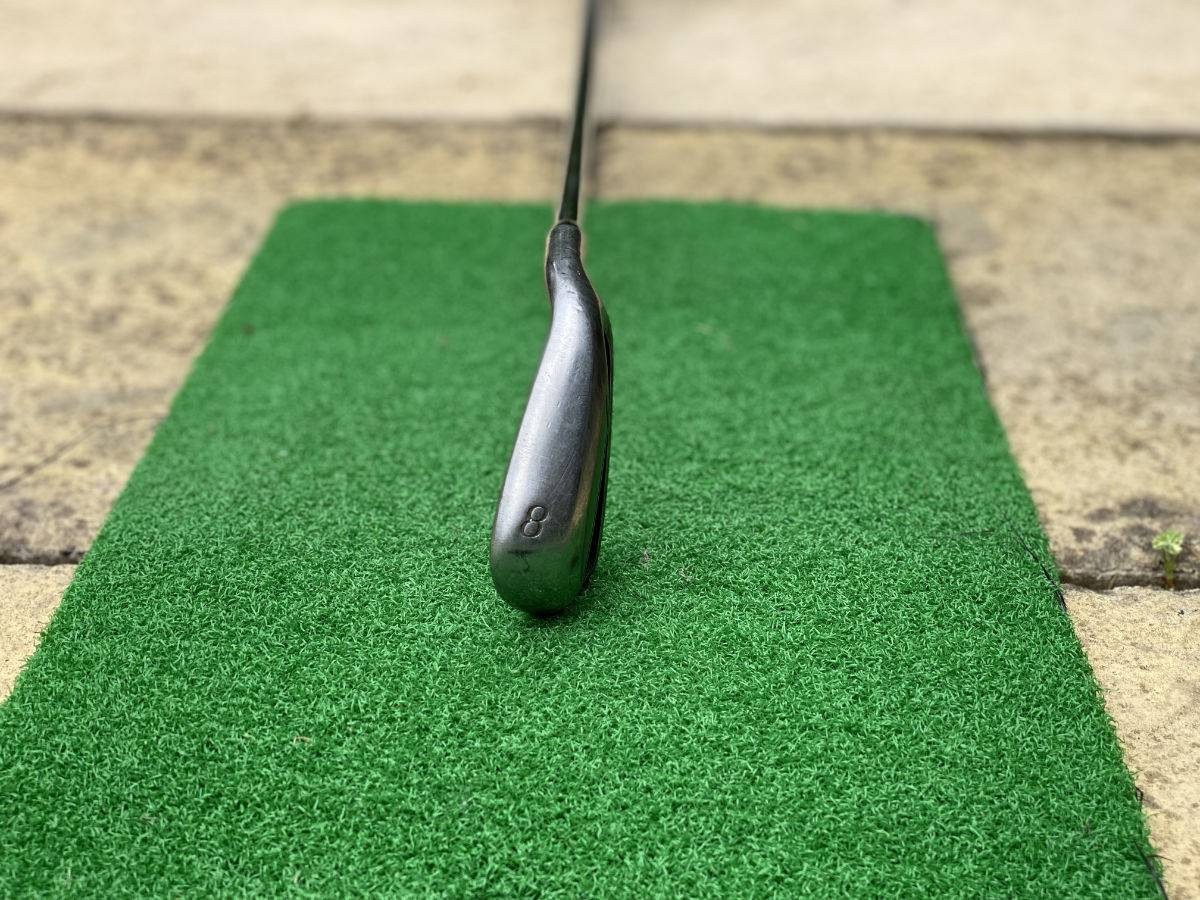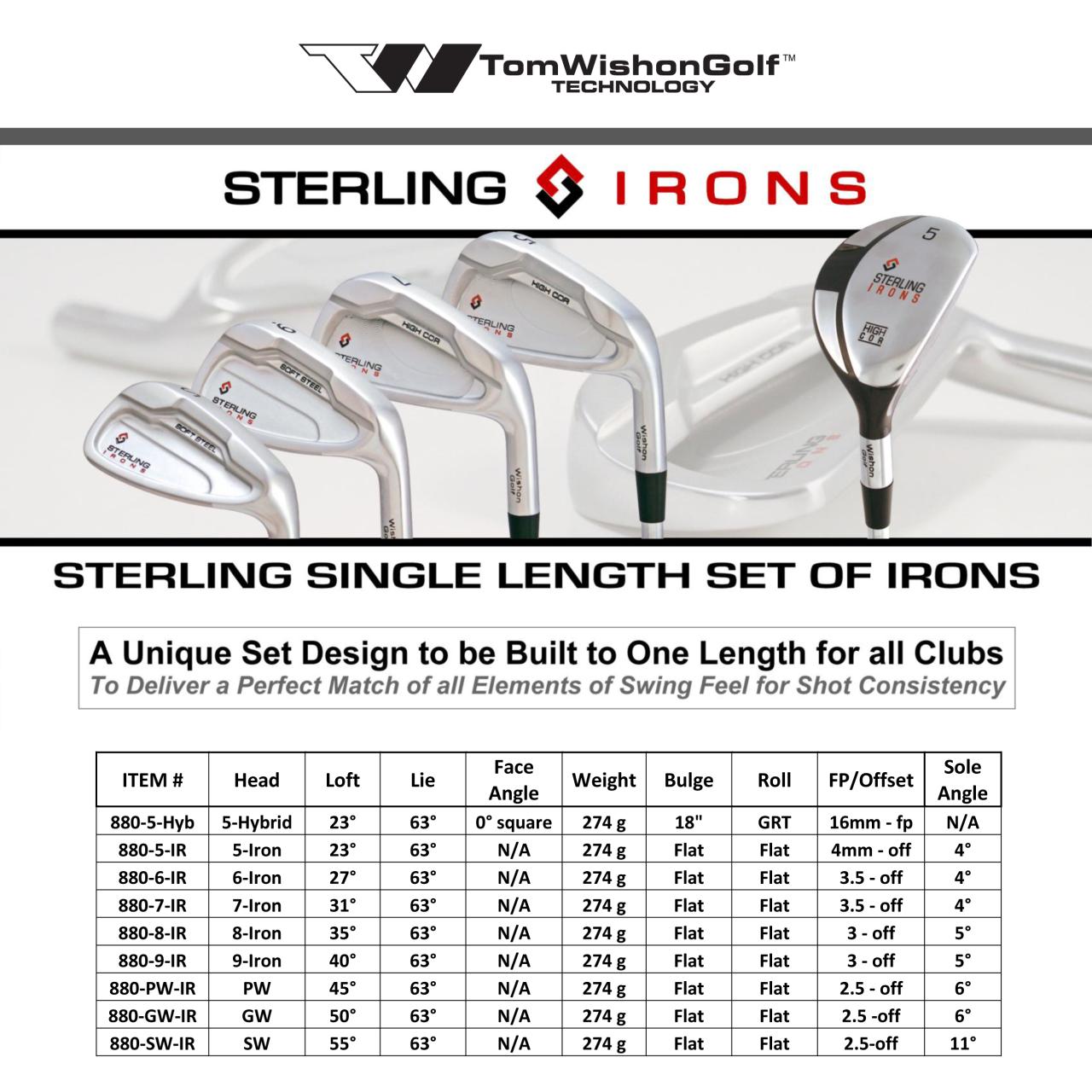The 8 iron golf club, a staple in any golfer’s bag, occupies a crucial middle ground between long irons and wedges. It’s the club that bridges the gap between power and precision, making it a versatile tool for a variety of shots.
Whether you’re a seasoned pro or a weekend warrior, understanding the nuances of the 8 iron can significantly elevate your game.
This guide delves into the history, technical aspects, and strategic applications of the 8 iron. We’ll explore its evolution, analyze its design features, and provide practical tips for mastering your swing. By the end, you’ll have a comprehensive understanding of this essential club and how to utilize it effectively on the course.
The 8 Iron
The 8 iron is a versatile club that holds a significant position in a standard golf set. It’s a crucial component for players of all skill levels, providing a balance between distance and accuracy. This club is often considered the “go-to” for mid-range shots, bridging the gap between the longer irons and the shorter wedges.
Loft Angle
The loft angle of an 8 iron typically ranges between 35° and 38°. This loft angle allows for a controlled and predictable trajectory, making it suitable for a variety of shots. The 8 iron is designed to produce a mid-to-high launch angle, which helps to achieve greater distance and accuracy compared to clubs with higher loft angles.
Intended Use
The 8 iron is a versatile club that can be used in various situations throughout a round of golf. Its intended use includes:
- Approaching the green: The 8 iron is a reliable club for approaching the green from distances ranging from 130 to 170 yards. Its predictable trajectory and consistent distance control make it a valuable tool for hitting accurate shots close to the pin.
- Mid-range shots: The 8 iron can be used for mid-range shots on the fairway or around the green. Its versatility allows players to adapt to different conditions and shot shapes.
- Out-of-bounds recovery: When faced with a shot that is out of bounds, the 8 iron can be used to hit a high, soft shot to minimize the distance lost.
Technical Aspects of the 8 Iron
The 8 iron is a versatile club in a golfer’s bag, designed to provide control and accuracy for shots of varying distances. Understanding the technical aspects of this club is crucial for golfers of all levels, as it allows them to optimize their game.
Length and Weight
The length and weight of an 8 iron are crucial factors that influence its performance. The length of an 8 iron typically ranges from 36 to 37 inches, while the weight can vary depending on the material and design. The head weight of an 8 iron is usually between 200 and 250 grams.
This combination of length and weight helps achieve the desired trajectory and distance for the club.
Clubhead Design
The design of the clubhead plays a significant role in the performance of an 8 iron. Modern 8 irons often feature a larger clubhead with a more forgiving sweet spot, allowing for greater accuracy even on off-center hits. The loft angle of the clubhead, typically around 35 degrees, determines the launch angle and distance of the shot.
Traditional vs. Modern 8 Iron
The traditional 8 iron, typically characterized by a smaller clubhead and a narrower sole, requires a higher level of precision and skill. Modern 8 irons, on the other hand, often feature a larger clubhead with a wider sole, making them more forgiving for off-center hits.
These advancements in clubhead design have resulted in increased distance and accuracy for golfers of all skill levels.
Mastering the 8 Iron Swing: 8 Iron Golf Club

The 8 iron is a versatile club that can be used for a variety of shots, from short approaches to long iron shots. To master the 8 iron swing, you need to understand the proper grip and stance, and the key elements of a successful swing.
This section will guide you through the process, offering tips and techniques to improve your accuracy and distance with the 8 iron.
Grip and Stance
The grip and stance are essential for a successful 8 iron swing. A proper grip ensures that you can control the clubface and generate power, while a balanced stance provides stability and allows for a smooth swing. * Grip:The grip should be firm but not tense.
Place your hands on the club with your thumbs pointing down the shaft. The grip should be slightly weaker than your normal grip for other clubs. This means that your left hand (for right-handed golfers) should be slightly more open, and your right hand should be slightly more closed.
Stance
The stance for an 8 iron is similar to that of other irons. Your feet should be shoulder-width apart, with your weight slightly shifted to your left foot (for right-handed golfers). Your knees should be slightly bent, and your back should be straight.
The ball should be positioned slightly in front of your left foot.
Key Elements of a Successful Swing, 8 iron golf club
The 8 iron swing should be smooth and controlled. The key elements of a successful swing are:* Backswing:The backswing should be smooth and controlled, with the club moving up and back in a single arc. Your shoulders and hips should rotate together, and your weight should shift to your right foot.
Downswing
The downswing should be a continuation of the backswing, with the club moving down and through the ball in a single arc. Your weight should shift back to your left foot, and your hips and shoulders should rotate in the opposite direction of your backswing.
Impact
At impact, the clubface should be square to the ball, and your weight should be balanced. Your arms should be fully extended, and your wrists should be firm.
Follow-through
The follow-through is the continuation of the swing after impact. The club should continue to move through the finish position, with your weight shifting to your left foot.
Tips and Techniques for Improvement
There are a number of tips and techniques that you can use to improve your accuracy and distance with the 8 iron.* Practice your swing:The best way to improve your 8 iron swing is to practice regularly. Use a practice range or your backyard to work on your swing mechanics.
Focus on your grip
A proper grip is essential for a successful 8 iron swing. Make sure that your grip is firm but not tense, and that your hands are positioned correctly on the club.
Maintain a balanced stance
A balanced stance will help you to generate power and control the clubface. Keep your knees slightly bent, and your weight slightly shifted to your left foot (for right-handed golfers).
Use a smooth swing
The 8 iron swing should be smooth and controlled. Avoid making jerky or sudden movements.
Keep your eye on the ball
Focus on the ball throughout your swing. This will help you to maintain a consistent contact point.
Practice your short game
The 8 iron is often used for short approaches. Practice your short game regularly to improve your accuracy and consistency.
“The 8 iron is a great club for those who want to hit a variety of shots. With a little practice, you can master the 8 iron swing and become a more consistent golfer.”
[Name of Golf Professional]
The 8 Iron in Different Playing Conditions

The 8 iron, with its versatility and control, is a valuable asset in any golfer’s bag. However, its effectiveness can be significantly influenced by the prevailing playing conditions. Understanding how wind, course conditions, and other factors affect the 8 iron shot can help golfers make informed decisions and maximize their performance.
Wind Impact on 8 Iron Shots
Wind can significantly impact the trajectory and distance of an 8 iron shot. A headwind will reduce distance, while a tailwind will increase it. Crosswinds can cause the ball to drift left or right. Golfers should consider the wind direction and strength when selecting their club and aiming their shot.
For example, a 10 mph headwind can reduce an 8 iron shot by 5-10 yards.
Course Conditions and 8 Iron Play
The course conditions can also affect the 8 iron shot.
- Fairway: A well-maintained fairway provides a consistent surface for the ball to roll, allowing for more predictable distance and direction.
- Rough: The rough can significantly affect the ball’s trajectory and distance. The 8 iron may need to be adjusted to account for the increased resistance from the taller grass.
The 8 Iron in Golf History

The 8 iron, a staple in the golfer’s bag, has evolved significantly throughout the history of golf, reflecting advancements in technology and the changing demands of the game. From its humble beginnings as a club for skilled players to its modern-day versatility, the 8 iron has played a vital role in shaping the game we know today.
Evolution of the 8 Iron
The emergence of the 8 iron can be traced back to the early 20th century. Before its introduction, golfers relied on a limited set of clubs, typically ranging from a driver to a putter. The 8 iron, along with other mid-irons, emerged as a solution to fill the gap between the longer irons and the shorter wedges.
Initially, 8 irons were designed with wooden shafts and a relatively large head, making them difficult to control for the average golfer.
Technological Advancements in 8 Iron Design
The evolution of the 8 iron has been driven by significant technological advancements, including:
- Steel Shafts:The introduction of steel shafts in the 1930s revolutionized golf club design, providing greater control and consistency compared to wooden shafts. Steel shafts allowed for greater accuracy and distance, making the 8 iron more accessible to a wider range of golfers.
- Cavity Back Design:The development of cavity back irons in the 1960s marked a significant milestone in 8 iron design. Cavity back construction increased the club’s forgiveness, making it easier to hit the ball consistently, even on off-center hits.
- Graphite Shafts:The introduction of graphite shafts in the 1980s further enhanced the 8 iron’s performance. Graphite shafts are lighter than steel shafts, providing greater clubhead speed and distance.
- Forged Irons:Forged irons, a popular choice among skilled players, offer superior feel and control compared to cast irons. Forged 8 irons are often preferred for their precision and responsiveness, allowing for more nuanced shot-making.
Notable Golfers and Their Use of the 8 Iron
The 8 iron has been a favored club for many legendary golfers throughout history. Some notable examples include:
- Jack Nicklaus:Known as the “Golden Bear,” Nicklaus was renowned for his masterful use of all clubs, including the 8 iron. His signature shot, the “Nicklaus 8 iron,” was a high-trajectory shot that often landed softly on the green, leaving him with short putts for birdies.
- Tiger Woods:Woods, one of the most dominant golfers of all time, was also known for his exceptional use of the 8 iron. His precision and power with the 8 iron allowed him to hit shots from a variety of lies, often landing the ball close to the pin for birdie opportunities.
- Ben Hogan:Hogan, a renowned ball striker, was famous for his exceptional control and accuracy with the 8 iron. He often used the 8 iron to shape shots around the green, demonstrating his ability to hit the ball with precision and consistency.
Quick FAQs
What is the typical loft angle of an 8 iron?
The standard loft angle for an 8 iron is 35-37 degrees.
What are the key elements of a successful 8 iron swing?
A successful 8 iron swing requires a balanced stance, a smooth backswing, and a controlled downswing with a focus on impact.
What are some tips for improving accuracy with the 8 iron?
Focus on a consistent grip, maintain a balanced stance throughout the swing, and practice hitting the sweet spot of the clubface.

